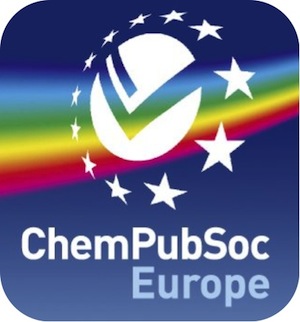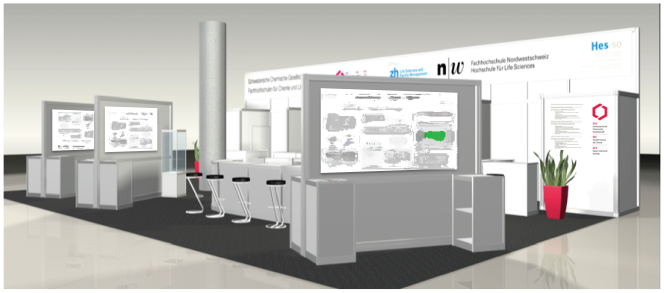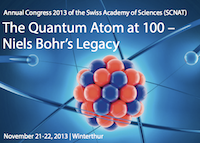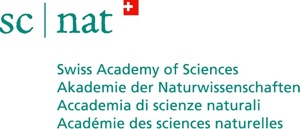First ChemElectroChem Articles are online
 ChemElectroChem is the latest Journal of the ChemPubSoc-Europe consortium, where also SCS is part of. Main topics of this journal that is published by Wiley-VCH are energy saving systems, electro catalysis as well as Photo- and Bioelectrochemistry.
ChemElectroChem is the latest Journal of the ChemPubSoc-Europe consortium, where also SCS is part of. Main topics of this journal that is published by Wiley-VCH are energy saving systems, electro catalysis as well as Photo- and Bioelectrochemistry.
For now, all alrticles are free of charge and you can download them from the ChemElectroChem website.
![]()
ILMAC 2013 - Forum Program
By holding different themed events, ILMAC is underlining its leading role as an innovation, information and contact platform for process and laboratory technology. In cooperation with different partners, topics that are of relevance for the sector will be taken up and presented in the form of a series of lectures.
Tuesday, September 24, 2013
10.00-12.00 Media conference ILMAC, ILMAC-Lounges and Presentation of the SCS FH-Award winner projects, followed by an apéro.
- Dr. Rainer Riedl, ZHAW
- Frau Sina Saxer, FHNW
- Dr. Ennio Vanoli, EIA Fribourg
Wednesday, September 25, 2013
10.00-11.00 Presentation of the SCG FH-Award winners, category 'Molecules for Life Sciences'
- Dr. Rainer Riedl, ZHAW
Tackling antibiotic resistance: a joint project of the center for organic and medicinal chemistry ZHAW and the Bioversys GAG - Dr. Lucy Kind, FHNW
Remineralization of sub-surface carious lesions initiated by a selfassembling peptide - Development of a bioceramic tooth model - Prof Ursula Graf-Hausner, ZHAW
Skin bioprinting: an innovative approach to produce standardized skin models on demand
11.15-14.00 Lunch & Learn: Wider die Fälschung von Medikamenten; Program details on
www.ilmac.ch/en-US/besucher/begleitveranstaltungen
Thursday, September 26, 2013
10.00-11.00 Presentation of the SCG FH-Awards winners, category 'Analytic in the Life Sciences'
- Dr. Sina Saxer, FHNW
Printing enzymes for colorimetric assays on paper - Romina Dörig, ZHAW
Development of a high sensitivity label-free waveguide interferometry instrument: A project between the Center for Biochemistry ZHAW and Creoptix GmbH - Prof. Götz Schlotterbeck, FHNW
Synergy of metabolic profiling, pharmacological testing and process engineering enables inauguration of a bamboo pilot plant extraction unit in Fuijan, China
11.15-14.00 Lunch & Learn: Hygyenic Design in der Lebensmittelindustrie; Program details on
www.ilmac.ch/en-US/besucher/begleitveranstaltungen
14.30-16.00 Walking through Sustainable Chemistry (SCS stand)
- Poster exhibition and expert talks about state of the art technology on sustainable (bio)chemistry in chemical research and production.
- SusChem Switzerland: invitation to the launch of the National Technology Platform (NTP) on Sustainable Chemistry.
- Meet and greet with light refreshments
Friday, September 27, 2013
10.00-11.00 Presentation of the SCG FH-Award winners, category 'Chemistry and the Environment'
- Justine Horner, EIA Fribourg
Green synthesis of mono- and disubstituted pyridine via aromatic nucleophilic substitution - Prof. Patrick Shahgaldian, FHNW
A synthetic nanomaterial for virus recognition produced by surface imprinting - Christoph Gasser, FHNW
Nanobiocatalytic depolymerization of lignin for the production of platform phenolic chemicals
11.00-13.30 Mini-Symposium of the Swiss Chemical and Process Engineers (SGVC)
- Introduction, Franziska Morganti, ZHAW/SGVC
- Prof. Dr. Philipp Rudolf von Rohr, ETH Zürich
Transportphänomene in Mikro- und Millireaktoren - Anne Kaaden, Ehrfeld Mikrotechnik BTS GmbH
High Performance Flow Systems - Scale-up and Use - Kleiner Imbiss
- Dr. Ralf Dümpelmann, Clariant International Ltd
Miniaturisierung und 'High-Throughput' in der industriellen F&E - Discussion round
14.00-15.00 Ceremony and lectures of the Dr. Max Lüthi Awards 2013
- Peter Elmiger, ZHAW
Design und Synthese von neuen MMP-Inhibitoren - Christophe Laporte, HES-SO Fribourg
Quantification and analysis of ammonium traces by fluorimetry and automatization on FIA
David Spichiger, SCS
24.07.2013
ILMAC 2013 - Competence in Process and Laboratory Technology
![]()
ILMAC 2013: Geared to you. Focused on your success.
24.-27. September 2013 | Messe Basel
Markets worldwide are undergoing a radical change, and the process and laboratory industry is no exception. The way to achieve continuous success here is to keep pace with developments and to launch innovations at precisely the right time.
ILMAC 2013: some 450 exhibitors from research and development, pilot testing and engineering, right through to production and disposal – mapping the entire production sequence.
SCS Activities at ILMAC 2013
At ILMAC 2013 the SCS will present itself in a completely new way and focus on in-fair activities to closer interact with visitors. In collaboration with the universities of applied sciences, ZHAW, FHNW and HES-SO (Fachhochschulen FH), the SCS awards the best joint research projects of FH and their industrial partners and will present them in an exhibition at the shared stand. In addition the best projects will be presented as short talks in the ILMAC-Forum. Besides the SCS-FH activities three mini-symposia will shorten your journey and the winners of the Dr. Max Lüthi Award 2013 will be honored. It would be our pleasure to welcome you as our guest at the stand or as visitor in one of the forum events.
ILMAC-Forum: an interesting 4-days program
Program of the ILMAC-Forum
SCS/FH Stand: Hall 1.1, Stand C84

More information: http://www.ilmac.ch
David Spichiger, SCS
23.07.2013
Save the date: SCNAT Annual Congress 2013
 Annual Congress 2013 of the Swiss Academy of Sciences (SCNAT), November 21-22, 2013 | Winterthur
Annual Congress 2013 of the Swiss Academy of Sciences (SCNAT), November 21-22, 2013 | Winterthur
«The Quantum Atom at 100 – Niels Bohr’s Legacy»
The congress will celebrate the 100th anniversary of Niels Bohr’s publication «On the Constitution of Atoms and Molecules» and offer an overview on subsequent developments, leading to the modern version of quantum mechanics and its implications and to the current understanding of the constitution of matter.
The Zurich University of Applied Science in Winterthur will host this year’s congress.
More information:
http://congress13.scnat.ch/e/jahreskongress/

David Spichiger, SCS
11.07.2013
Call for nominations for the SGMS award
The SGMS award is awarded to a promising scientist working in Switzerland or a promising Swiss scientist working abroad, for outstanding independent research in the field of mass spectrometry.
The prize is awarded after evaluation by an international panel (Prof G Allmaier, Prof C Costello, Prof G Cooks, Prof Y Tsybin, Dr M Suter, Dr B Gerrits). The award ceremony takes place at the annual SGMS meeting and includes a plenary presentation given by the awardee.
David Spichiger, SCS
11.07.2013
Page 166 of 303
